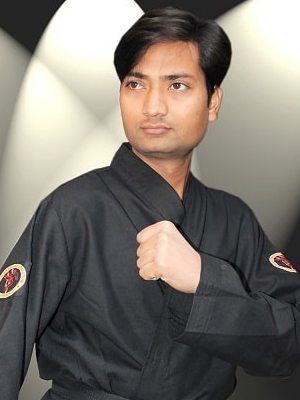Discover the rich legacy of Kalaripayattu, India’s legendary martial arts tradition, in this captivating exploration. Uncover the ancient techniques, cultural significance, and profound philosophy behind Kalaripayattu’s enduring legacy. From its origins in Kerala to its modern applications worldwide, it is the fusion of dynamic and combat arts, an ancient culture that defines this martial art.
Kalaripayattu: India’s Legendary Martial arts
“India’s Legendary Martial arts,” Kalaripayattu is revered as one of the oldest martial arts globally, originating from the “God’s Own Country.” It is commonly hailed as the progenitor of martial arts. The term “Kalaripayattu” originates from two words – “Kalari,” signifying a place of training or gymnasium, and “payattu,” denoting fighting or exercise.
Traditionally, the Kalari centers resemble temples. The Kalari is constructed four feet below ground level, with interiors measuring 42 feet in length and 21 feet in width. Positioned in the southwest corner is the poothara, housing the guardian deity of the Kalari. The seven-tiered steps, resembling a pyramid, symbolize the seven qualities that a Kalari practitioner must embody.
“India’s Legendary Martial arts,” Kalaripayattu, a personal combat training system, incorporates exercises aimed at honing sharp reflexes for unarmed combat and adept fighting with various weapons such as sticks, daggers, knives, spears, swords, shields, and Urumi. Renowned for its high-flying acrobatics and graceful movements, Kalaripayattu seamlessly employs deadly weapons. The movements in Kalari draw inspiration from the mannerisms and fighting techniques of animals.
History of Kalaripayattu
The practice of Kalaripayattu is believed to have originated in the 3rd century BC. Saint Parashurama, the sixth incarnation of Vishnu, is credited as the founder of Kalaripayattu. He established 42 Kalaris and instructed twenty-one masters to safeguard the land of Kerala. This martial art was predominantly practiced by the warrior class of Kerala to defend their territory.
“India’s Legendary Martial arts,” Kalaripayattu flourished during the 100-year war period among the powerful dynasties of Cholas, Cheras, and Pandyas around the 11th century. However, during the British rule in the 19th century, Kalaripayattu was banned due to fears of revolution, resulting in a sudden decline of its practice across the state. In the late 20th century, the practice of Kalari gradually regained popularity as part of efforts to promote traditional art forms in South India.
Zarrilli asserts that the Tamil combat techniques from the Sangam period (600 BCE–300 CE) and the Sanskritic Dhanur Vedic traditions, introduced by northern Brahmins from the 7th century CE onwards, were the earliest influences on Kalaripayattu.
During the Sangam era, every warrior underwent consistent military training in various skills such as target practice, horse riding, and elephant riding. They typically specialized in the use of specific weapons of the time, such as the spear (vel), sword (val), shield (kedaham), and bow and arrow (vil ambu).
According to Zarrilli, Kalaripayattu has been practiced “since at least the twelfth century” CE. In the 11th century, the second Chera kingdom engaged in a century-long war with the Chola kingdom, resulting in the disintegration of the Chera kingdom. During this period, military combat training was compulsory, and according to Elamkulam Kunjan Pillai, Kalaripayattu took shape.
Historian A. Sreedharan Menon states that Kalaripayattu was one of the most important aspects of feudal Keralite society. It played a significant role in imparting military training and instilling Spartan-like discipline among the youth of Kerala, regardless of caste, community, or gender.
Martial Art Styles
There are primarily two main styles of Kalarippayattu:
- Vadakkan or Northern style: Predominantly practiced in the Malabar region of Kerala, the Vadakkan style emphasizes graceful body movements and weaponry techniques.
- Thekken or Southern Style: Also known as Adi Murai, Thekken Kalarippayattu is mainly practiced in the Travancore region. This style focuses on free armed techniques and powerful movements.
Learning Phases In Kalaripayattu
Combat training takes place at the Kalari. The fundamental principle of Kalari training involves starting with an oil massage until the body becomes agile and supple.
The practice of Kalaripayattu is primarily divided into four stages:
- Maithari involves body control exercises.
- Kolthari focuses on the practice of wooden weapons.
- Ankathari emphasizes the practice of metal weapons.
- Verumkai encompasses bare hand fighting techniques.
Kalaripayattu: Treatment Method
Once a practitioner has mastered martial training across all four stages, they are introduced to Kalari Chikitsa, which involves treatment using traditional medicines. This healing system is rooted in the understanding of Marmas (vital spots) and the body’s energy channels.
Developed mainly by Kalari Gurus, these medicinal applications aim to heal injuries sustained during combat while also enhancing students’ fighting capabilities. Traditionally, students undergo Kalari Uzhichil, a full-body oil massage using hands and feet, unique to Kalaripayattu, before commencing Kalari practice. This process enhances flexibility, improves mental acuity, and stimulates the flow of vital energy.
Kalaripayattu: Influence on other art forms
“India’s Legendary Martial arts,” Other traditional art forms such as Kathakali, Kolkali, classical dance forms, etc., have consistently been influenced by the movements of Kalaripayattu. The body control exercises of Kalari, which require excellent flexibility and grace, enhance performance in other art forms. Not only Kalari practice, but also the body massage or Uzhichil, which is part of the Kalari system, is sought after by artists to improve their physical agility in performance.
Benefits Of Learning Kalaripayattu
The practice of Kalari offers significant benefits to the practitioner. The traditions of combat are pursued for various reasons, including self-defense, mental and spiritual development, performances, and the preservation of a nation’s intangible cultural heritage.
- Enhances body strength and flexibility, aiding in self-defense.
- Improves speed and reflexes significantly.
- Increases concentration levels.
- Develops patience.
- Enhances survival skills in assault situations.
- Boosts immunity, warding off diseases.
- Activates both physical and spiritual powers to their fullest potential.
Click here to learn What is Kassido Martial Art ?

Martial arts trainer Karatians School India, Thank you for reading this post. This website is about martial arts, sports, and entertainment. Its goal is to make more people aware of martial arts and help them become self-reliant.

